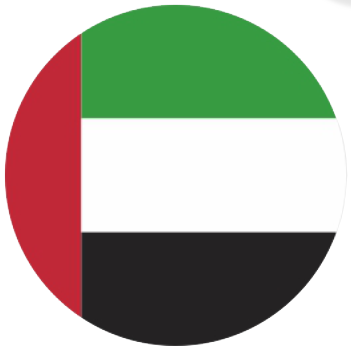
Real estate market in the Gulf countries: comparative analysis
In recent years, the real estate market in the countries of the Cooperation Council for the Arab States of the Gulf (GCC) has attracted increasing attention of investors from all over the world. However, despite geographical proximity and some commonalities, the real estate markets in the United Arab Emirates (UAE), Qatar, Oman and Bahrain have their own unique features and characteristics.
Economic growth plays a key role in shaping each country's real estate market. The UAE, for example, has made significant progress in diversifying its economy by focusing on tourism and trade. This has led to an increase in demand for commercial real estate and the hospitality sector. Qatar, for its part, is relying on its vast natural gas reserves, which has spurred growth in infrastructure projects and housing construction. Oman and Bahrain, although smaller in size, are also looking to diversify their economies, which is reflected in their real estate markets.
The regulatory environment in each country also has a significant impact on the real estate market. The UAE, especially Dubai, is known for its investor-friendly laws, including the possibility of 100% foreign ownership of real estate in certain zones. Qatar has recently introduced similar measures, allowing foreigners to own real estate in certain areas. Oman and Bahrain are also working to liberalize their real estate laws, but the process is slower.
Demographic factors play an important role in shaping demand for real estate. The UAE and Qatar are characterized by a high proportion of expatriates in the population, which creates a constant demand for rental housing and office space. Oman and Bahrain have more homogeneous local populations, which affects the types of real estate in demand.
Investment opportunities in each country also differ. In the UAE, investments in luxury real estate and commercial properties are popular. Qatar attracts investors with its large-scale infrastructure projects, especially in the run-up to major international events. Oman offers opportunities in the tourism real estate sector, while Bahrain is developing its financial sector, which creates demand for office space.
Compared to Saudi Arabia, the largest economy in the region, these countries have their own characteristics. Saudi Arabia is undertaking extensive reforms to diversify its economy and attract foreign investment, which creates new opportunities in the real estate market. However, the smaller economies of the UAE, Qatar, Oman and Bahrain allow them to be more flexible in adapting to changing market conditions.
In conclusion, although the GCC countries share many similarities, their real estate markets are shaped by unique economic, regulatory and demographic factors. It is important for investors and market participants to consider these differences when making decisions. The future of the real estate market in the region looks promising, but will require careful analysis and understanding of the specifics of each country.
 7
7
 102
102  3
3  3
3  1
1  4
4
 42
42  1
1  1
1  1
1  7
7
 7
7

The Dubai real estate market is witnessing moderate growth in real estate prices in early 2025. Explore the latest trends and innovations that are shaping Dubai's real estate market in 2025. Learn about the key forecasts, growth drivers and disruptive initiatives that are cementing the city's status as a global real estate hub.

Real estate prices in Dubai are rising at a record pace, attracting the attention of investors from all over the world. However, the impressive growth also hides potential risks that require careful analysis before making investment decisions.

The real estate market in the UAE's most conservative emirate has recently experienced a real boom. Real Estate Department experts note that this growth is due to three key factors: investor confidence in the market, the general economic recovery and ever-increasing real estate prices.





















